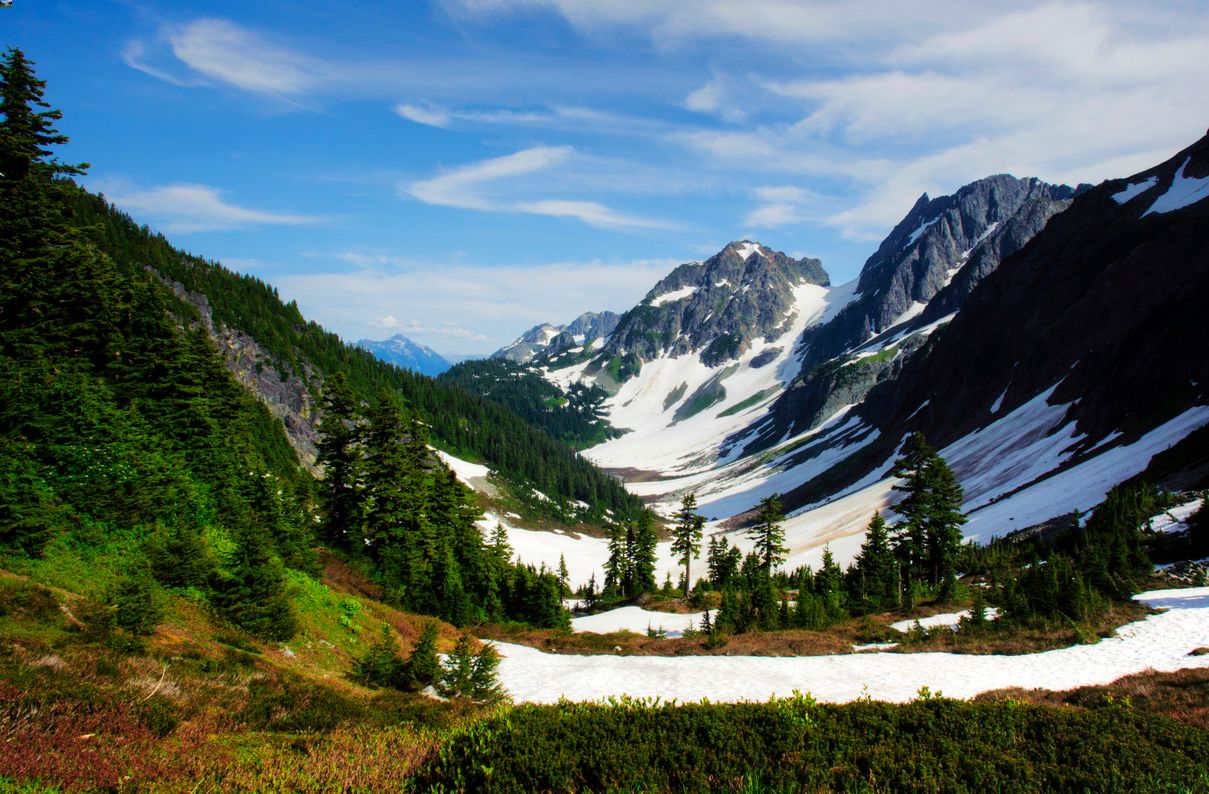Secrets Of Washington’s North Cascades Ghost Settlements

Ever wondered about the hidden stories of Washington's North Cascades? This rugged region isn't just about stunning landscapes and outdoor adventures. Tucked away in the mountains are ghost settlements that whisper tales of a bygone era. These abandoned towns, once bustling with miners and loggers, now stand as silent reminders of the past. Exploring these ghost towns offers a unique glimpse into the history and hardships faced by early settlers. Whether you're a history buff or just love a good mystery, the North Cascades' ghost settlements provide a fascinating journey back in time. Ready to uncover their secrets? Let's dive in!
Secrets of Washington's North Cascades Ghost Settlements
Washington's North Cascades are not just about breathtaking landscapes and rugged trails. Hidden within these mountains lie ghost settlements, remnants of once-thriving communities. These places offer a glimpse into the past, where miners, loggers, and settlers once lived and worked. Let's uncover some of these mysterious spots.
Monte Cristo
Monte Cristo was once a bustling mining town in the late 1800s. Today, it stands as a ghostly reminder of the gold rush era.
- Monte Cristo: Located deep in the Cascades, this town was founded in 1889. It boomed with the discovery of gold and silver, attracting thousands. Now, only a few structures remain, whispering tales of its prosperous past.
Ruby City
Ruby City, another mining town, had a short-lived but vibrant existence. Its story is one of rapid rise and fall.
- Ruby City: Established in the 1870s, Ruby City thrived on the discovery of ruby silver ore. However, the town quickly declined when the ore ran out. Today, visitors can find scattered remnants of buildings and mining equipment.
Barron
Barron was a logging town that met a similar fate. Its history is intertwined with the timber industry that once dominated the region.
- Barron: Founded in the early 1900s, Barron was a hub for logging operations. The town had a sawmill, school, and several homes. As the timber industry waned, so did Barron. Now, only a few decaying structures remain, hidden among the trees.
Holden Village
Holden Village offers a unique twist to the ghost settlement narrative. It has been transformed into a retreat center, preserving its history while serving a new purpose.
- Holden Village: Originally a copper mining town in the 1930s, Holden Village was abandoned in the 1950s. In the 1960s, it was repurposed as a retreat center. Visitors can explore old mining buildings and enjoy the serene surroundings.
Cokedale
Cokedale's story is tied to the coal industry. It was once a thriving community that supplied coal to nearby towns.
- Cokedale: Established in the early 1900s, Cokedale was a coal mining town. It had a school, post office, and several homes. The town declined as coal demand decreased. Today, only a few ruins and the old coke ovens remain.
Stehekin
Stehekin is not entirely abandoned but has a rich history worth exploring. It offers a blend of past and present.
- Stehekin: This remote community is accessible only by boat, plane, or hiking. Stehekin has a history of Native American habitation, followed by settlers in the late 1800s. While it still has a small population, many old structures and historical sites can be explored.
Lucerne
Lucerne's history is tied to the Great Northern Railway. It was once a bustling stop for travelers and workers.
- Lucerne: Founded in the early 1900s, Lucerne served as a railway stop and logging town. The town declined as the railway's importance waned. Today, visitors can find remnants of the old railway station and a few scattered buildings.
Diablo
Diablo was a company town built for workers constructing the Diablo Dam. Its history is closely linked to the development of hydroelectric power in the region.
- Diablo: Established in the 1920s, Diablo housed workers building the dam. The town had homes, a school, and a general store. After the dam's completion, the town was largely abandoned. Some structures still stand, offering a glimpse into its past.
Wellington
Wellington's tragic history is marked by one of the deadliest avalanches in U.S. history. It serves as a somber reminder of nature's power.
- Wellington: This railway town was the site of the 1910 avalanche that killed 96 people. The town was abandoned shortly after. Today, visitors can hike the Iron Goat Trail to see remnants of the town and the old railway tunnels.
Index
Index was a bustling town during the logging and mining booms. Its history is preserved through its remaining structures and stories.
- Index: Founded in the late 1800s, Index thrived on logging and mining. The town had a hotel, school, and several businesses. While it still has a small population, many historical buildings remain, offering a window into its past.
Hidden Gems of the North Cascades
Washington's North Cascades hold hidden gems waiting to be discovered. These ghost settlements offer a unique glimpse into the past, blending history with natural beauty. Exploring places like Monte Cristo, Ruby City, and Barron gives a sense of adventure and a deeper appreciation for the region's rich heritage.
Visiting these sites isn't just about seeing old buildings. It's about connecting with the stories of those who once lived there. The North Cascades provide a perfect backdrop for this journey, with stunning landscapes and diverse wildlife.
Whether you're a history buff, nature lover, or just looking for a unique experience, the ghost settlements of the North Cascades won't disappoint. Pack your hiking boots, grab a map, and set out to uncover the secrets of this fascinating region. Your adventure awaits in the heart of Washington's wilderness.

